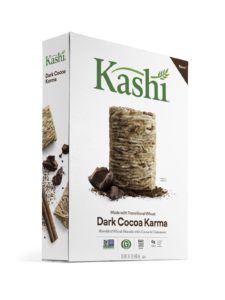Certified Transitional programs offer opportunities for farmers switching to organic farming and to boost U.S. organic farming acres. But there are concerns about creating a competing market to organic and questions about how to educate consumers about the value of foods made with Certified Transitional crops.
Those were main takeaways from an educational session on Certified Transitional at the Organic & Non-GMO Forum held in Minneapolis in November. A panel of organic industry experts discussed the opportunities and challenges of Certified Transitional programs.
Needs to be “on-ramp” to organic, not “organic lite”
The shortage of U.S.-grown organic crops to meet consumer demand is leading the organic industry to develop strategies to increase organic farming acreage in the U.S. Certified Transitional is one of those strategies.
Chris Schreiner, executive director at Oregon Tilth, said farmers face challenges with the three-year transition to organic. These include higher costs, decreased crop yields, no access to the organic premium for three years, a learning curve for growing organic, and a lack of community support.
Certified Transitional programs aim to help farmers overcome those challenges. April Crittenden, director of farm programs at organic certifier CCOF, described Certified Transitional as “training wheels” to organic farming. “It offers a roadmap to (prospective) organic farmers and the organic certification process.”
According to Nate Lewis, senior crops and livestock specialist at the Organic Trade Association (OTA), Certified Transitional programs aren’t new; a dozen organic certifiers have had programs in place.
“What’s new is that Certified Transitional can help bring more farmers on board and help share the financial risks of transitioning,” he said.
A growing number of private Certified Transitional programs led OTA to contact the U.S. Department of Agriculture about creating a national program.
We wanted Certified Transitional to be on-ramp to organic and need to make sure guard rails are in place.”
“We were hesitant (to engage the USDA),” Lewis said. “We didn’t want another competing label in the marketplace. We wanted Certified Transitional to be on-ramp to organic and need to make sure guard rails are in place. The biggest risk is creating an ‘organic lite’ market.”
According to Lewis, some of the “guard rails” of Certified Transitional include requiring that farmers follow the national organic rules, not allowing current organic farmers to downgrade to Certified Transitional, and limiting farmers to certifying their transitional crops only twice. “We don’t want an arrested transition where farmers stay at that level,” Lewis said.
First Certified Transitional product
Jay Johnson, senior vice president of sales at Healthy Food Ingredients, said Certified Transitional can be a win-win situation for both farmers and food manufacturers.
“It allows us to create strategic approaches with our customers and farmers,” he said. “As more producers transition, we can identify where they are and what they grow and then talk to our customers about their rotational crops and how they can use them.”

Kashi’s Dark Cocoa Karma cereal is made from transitional wheat
Certified Transitional products can also be non-GMO verified. “Companies will have to decide ‘am I going to put a consumer facing label on transitional products or use other channels such as non-GMO where these products can go,’ ” Lewis said.
Anna Key Jesus, senior director of quality systems at Amy’s Kitchen, said supply chain members will have to work together to make Certified Transitional work. “You need partnerships with suppliers and make long-term commitments (to source supply). Suppliers need certainty as well as manufacturers.”
Healthy Food Ingredients worked with cereal maker Kashi to develop the first labeled Certified Transitional product on the market. The product, called Dark Cocoa Karma, is made from transitional wheat.
Quality Assurance International developed the Certified Transitional program for Kashi, said Sarah Krol, managing director, food safety product division at NSF International.
“Kashi wanted to understand the difficulties of getting organic products to market,” she said. “Transitional certification can help bridge the gap.”
Both Johnson and Krol said the reaction to Kashi’s Certified Transitional product has been positive from consumers and the industry, though Krol wondered “Is there a need for another label? This could challenge consumers.”
Consumer education important
All the panelists emphasized the need for consumer education about the value of Certified Transitional.
“There needs to be consumer awareness of transitional products,” Crittenden said.
“How do we educate and ensure that we are doing Certified Transitional as a pathway to organic?” Jesus asked. “We’re still trying to figure out how to communicate that.”
Amy’s is exploring Certified Transitional as an option. “Our challenge is to educate consumers that we are not backsliding on organic,” Jesus said.
Lewis said millennials are likely to appreciate Certified Transitional products. “Fifty-two percent of organic consumers are millennials. They want to know about animal welfare, carbon sequestration, and other food-related issues. They will understand the value of Certified Transitional.”
Johnson said data on improved soil health resulting from Certified Transitional programs will drive more consumer acceptance of the “journey needed to go organic.”









